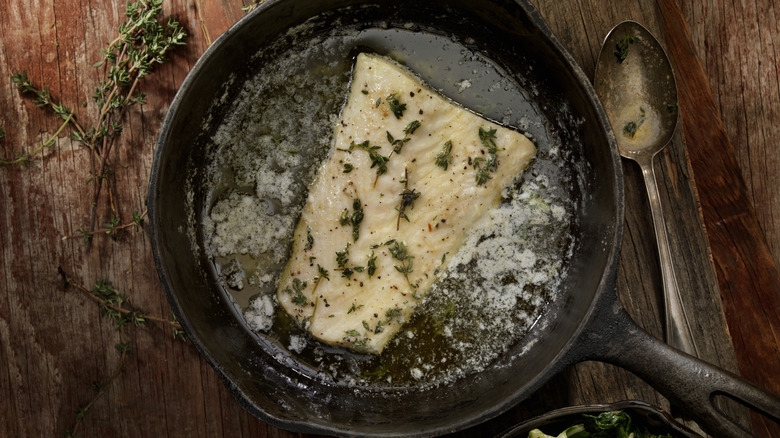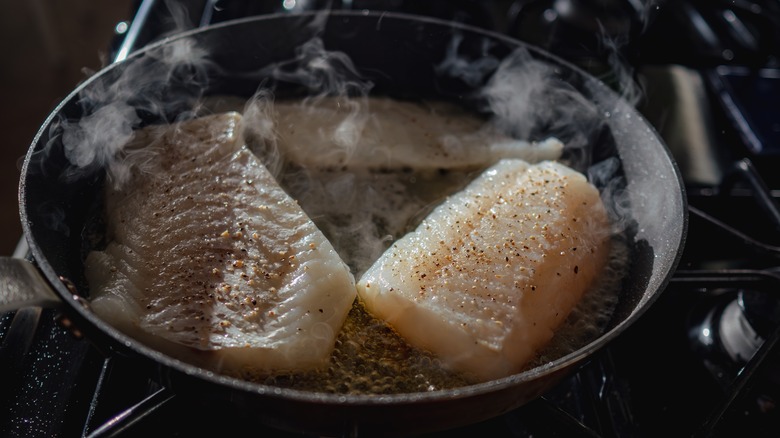The Foolproof Oil Blend That Will Stop Fish From Sticking To Your Pan
It's likely happened to you before: You toiled over a side of salmon or a filet of flounder, only to find it glued to your skillet. As you attempt to peel your fish away, everything breaks, flakes, and falls apart. Luckily, there's hope.
When you're searing fish, it's important to aim for an oil with a high smoke point. Using a high-smoke-point oil like canola or avocado will allow you to achieve a crisp exterior without burning the oil itself. But Alaska-based chef Amara Enciso takes her methodology one step further — and it's genius. Instead of using one oil, Enciso opts for a blend. The chef mixes 80% oil with a high smoke point and 20% oil with high fat content, according to The Kitchn's Grace Elkus, who swears by the method, too. Elkus further notes that adding a bit of high-fat oil further encourages even browning and better flavor — and most importantly, your fish won't stick.
Testing it out
Once you've become accustomed to the 80-20 ratio, the possibilities feel endless. Try blending ½ cup of avocado oil, which has a high smoke point, with two tablespoons of extra virgin olive oil, which has a high fat content. The mixture will stand up to high heat while still incorporating the lush, grassy notes of olive oil that we know and love.
For a more budget-friendly option, swap the avocado oil for canola oil, which also has a high smoke point. For a different high-fat oil, try coconut, which can add a refreshing, slightly tropical fragrance to your tuna filet or mahi-mahi. You'll only need a couple of tablespoons of the oil blend to coat your pan, and can reserve the remainder for next time.
Aside from the oil blend, there are other tips to keep in mind when attempting to achieve crispy fish skin that doesn't stick. Make sure the oil in your pain is sufficiently heated before adding your fish, skin side down. And as the fish cooks, avoid flipping it too early — it'll likely stick to the pan. Wait a couple minutes, resisting the urge to stir or move it around, and check the coloring of the edges of the fish skin — you're looking for signs of browning. Once you spot that browned exterior, you'll know your fish is seared, crispy, and ready to flip without the risk of breakage.

